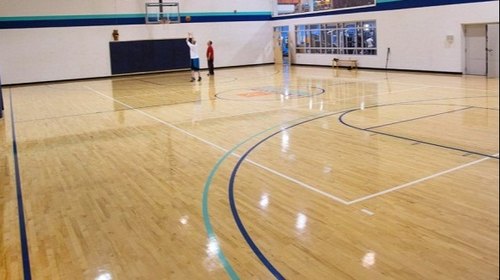New to running? Here’s what you need to know when running in the winter.
Running in the winter as a beginner may seem daunting at first. However, once you learn to embrace those dark nights, the occasional downpour, and the freezing temperatures, you may actually learn to enjoy it. Well, as much as you can.
This article will discuss what running gear to wear during the winter, the importance of a warmup, and how to stay safe while embracing those cold, dark, and rainy nights.
Investing in some winter running gear
First things first, if you’re a complete newbie to running chances are you’re going to be a little short on winter running training gear and clothing. Investing some hard-earned cash early into some warm winter running gear will have you comfortable, warm, and looking stylish once the temperatures drop.
As a bare minimum, we suggest investing in a running thermal and a pair of running gloves. A recent article by Running101 recommends nine of the best pairs of running gloves to keep you warm this winter.
Other cold-weather running gear you may wish to invest in include:
- A waterproof running jacket
- Some running tights
- A few three-quarter running tops
When choosing winter running gear, it’s important to make sure these are highly reflective. This increases visibility for other road users and pedestrians, keeping you safe and well-lit regardless of the conditions.
Don’t let the weather put you off
As a beginner to running, the last thing you may want to do in the winter is lace up and head for a run. However, Netdoctor mention not to let the weather put you off, in fact, running in the cold means you won’t get too hot, placing less stress on the joints and the body.
If you’re able to brave the elements, be sure to wrap up warm while watching where you’re running – be extra wary for ice and wet ground; these are key hazards to watch out for in the winter. If possible, we recommend wearing a pair of running trainers with increased traction for those days where it’s super slippy – keeping you nice and safe regardless of the weather.
However, it’s equally as important to know when not to run during the winter. More than likely, some days it will be too slippy, too wet, or too dark to run. In these instances, we advise opting for the treadmill if possible, whether this is in the comfort of your own home or at your local gym.
Be sure to perform a proper running warmup before pounding the pavement
Running101 also suggests warming up inside before heading out for your run. This will increase body temperature and blood flow to the working muscles – essential to reduce our risk of injury and pulling of a muscle.
Remember, it’s best to perform dynamic stretches such as high knees, leg swings, and walking lunges to warmup and static stretches to cooldown after your run. Static stretches include a standing calf stretch, quadriceps stretch, and hamstring stretch.
Tip: perform your running warmup inside – keeping you nice and warm.
The bottom line
Lacing up and running during the winter can be a difficult task. However, there a few pieces of advice we can implement to make it that little bit more enjoyable. Be sure to invest in some warm, reflective winter running gear, to perform a proper warmup, and most importantly, not let the weather put you off and prevent you from training.
Having a consistent winter of running and training will set you up for a fast spring and summer, perfect if you’re considering racing or targeting those personal bests.

















